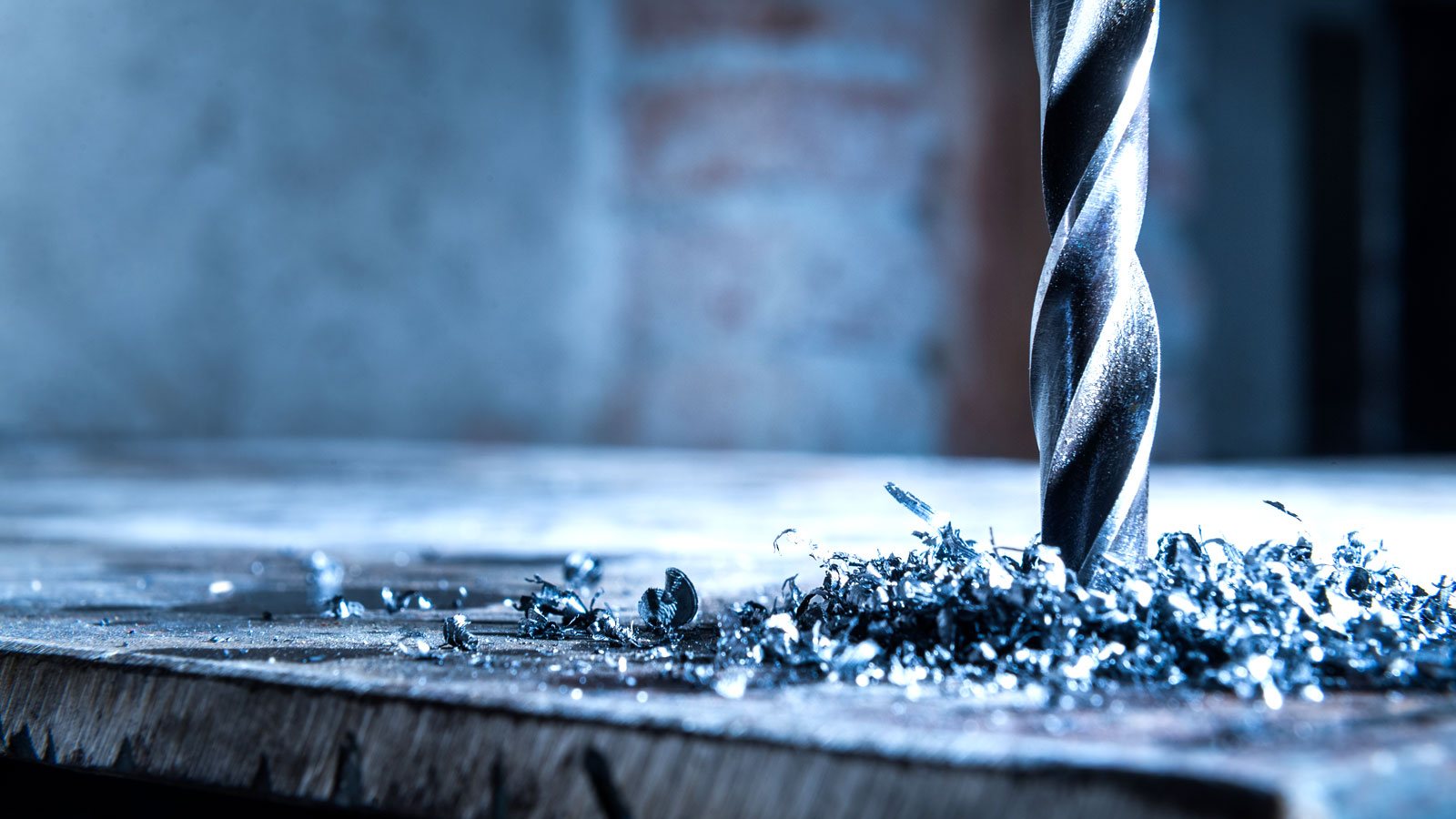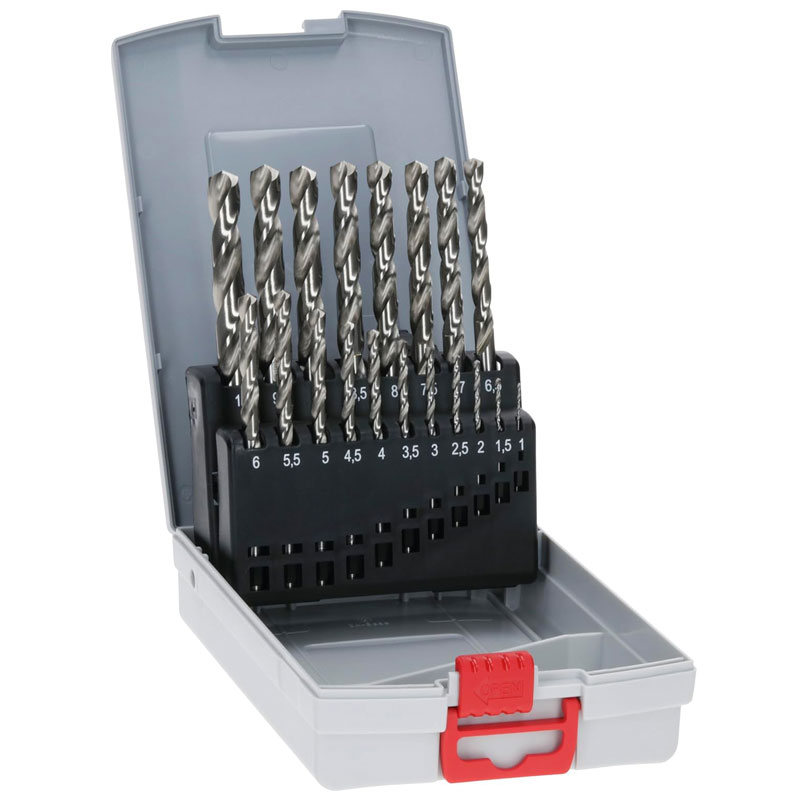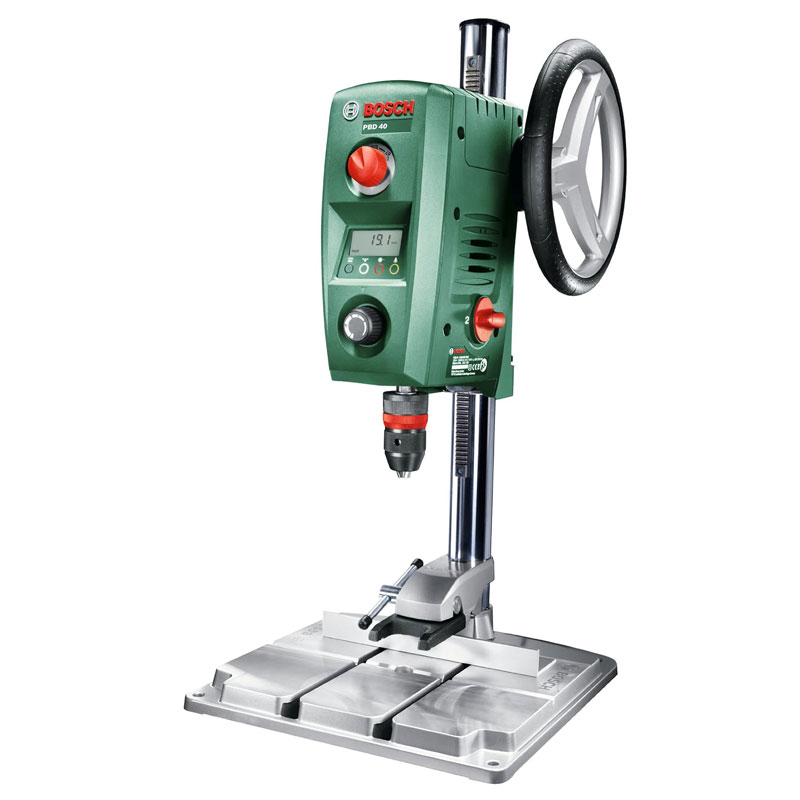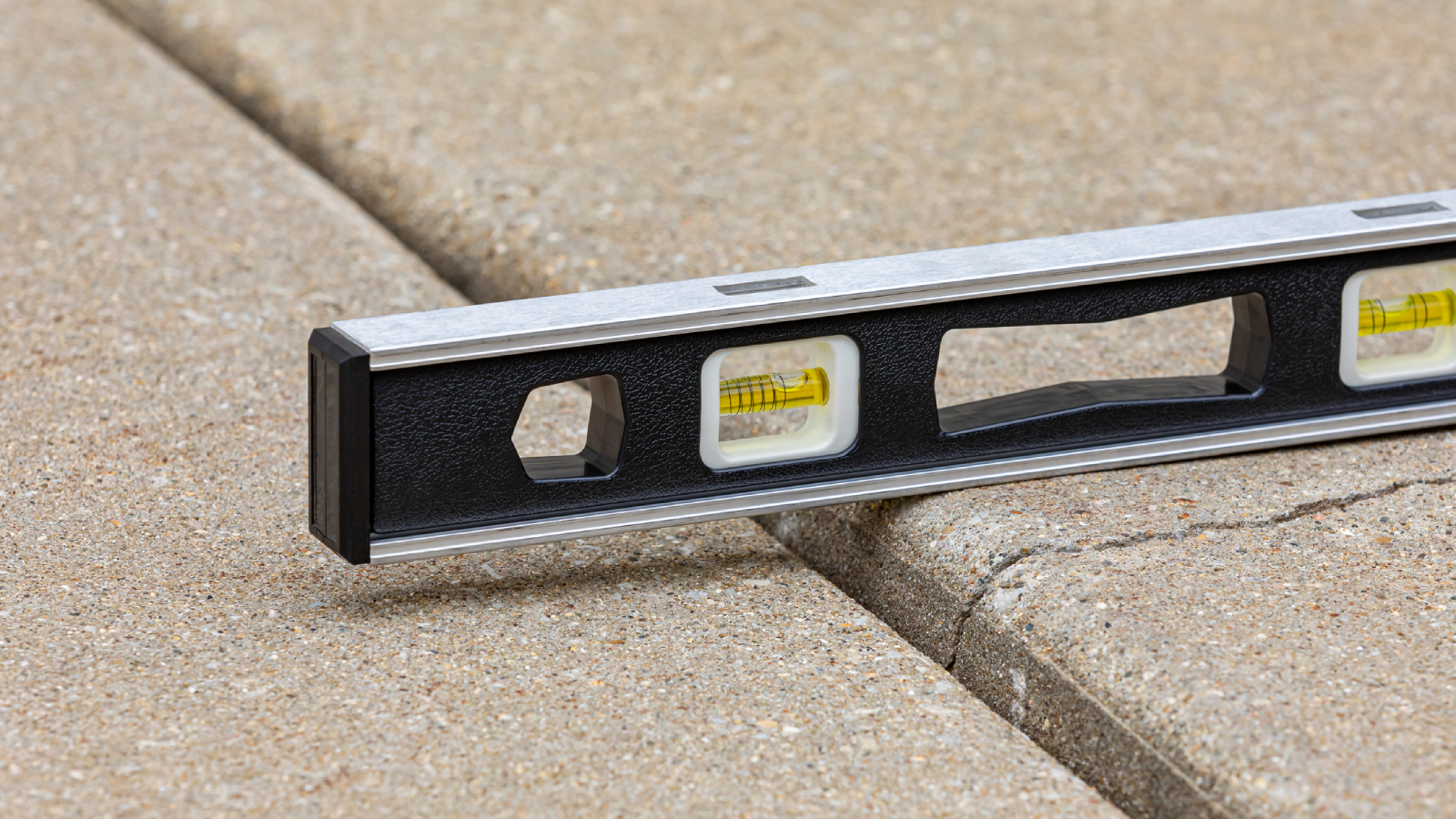Get expert insight into drilling into metal for clean, smooth and accurate holes
Discover pro tips, techniques, and the essential tools required for drilling into different metals

Drilling into metal may seem intimidating, but with the right tools and techniques, it’s a job that DIY enthusiasts can tackle with ease. However, there are some subtle differences that you should be aware of to ensure your metal drilling adventure is successful.
Choosing the right drill is a great starting point. You can select from the best cordless drills or pick a more specialised drill for more accuracy. Then you need to choose the right drill bit for the metal you're drilling. Finally, it's all about the technique to ensure you end up with a clean hole. Here you’ll find all the answers you need.

Leigh Start joined The Metal Store in 2015 and was appointed Managing Director in 2023. With nearly a decade of experience in the metal supply industry, Leigh has played a key role in driving the company’s growth and expanding its service offering.
Commonly drilled metals
Before drilling into metal, you need to consider the type of metal you are working with. Different metals have different properties. Leigh Start, MD at The Metal Store, explains the common options and their properties.
Steel
Steel is one of the most widely used materials in metal construction. Start shares, “It’s tough and durable, making it an excellent choice for many projects.” He adds, “Steel requires you to use drills that are designed for hard metals. Selecting the wrong drill can mean you’ll struggle to create holes and possibly damage your drill.”
Aluminium
This is one of the softest metal types found in construction. Start points out, “It’s a much easier metal to drill because of its lightweight and flexible nature.”
Brass/Copper
Both of these are soft metals, which makes them relatively easy to drill into. However, explains Start, “it can be tough to get even holes with these metals because they can grab at the drill bit.
Cast iron
This is a brittle metal, so you need to be careful when drilling and have the right bits, as Start explains, “You’ll need specialised bits (such as carbide or cobalt) and plenty of cutting fluid to reduce heat and friction.”
Bring your dream home to life with expert advice, how to guides and design inspiration. Sign up for our newsletter and get two free tickets to a Homebuilding & Renovating Show near you.
Try these tools for drilling into metal

Mark has over 20 years of experience in the building sector, leading to a wealth of knowledge surrounding building and renovating that he enjoys sharing with others who are looking to complete their own building projects.
Types of drills to use
When drilling into metal, it is essential to select the correct type of drill for the job, as Start shares, “The type of drill you choose is important to ensure you drill a hole in metal with precision and safety.”
For most DIY jobs, a hand drill is typically a good choice, according to Mark Irving, a Building expert at Build & Plumb. “A standard hand drill can be used for small jobs.” But if you need more power and accuracy, he says, “A drill press is ideal for drilling precise holes in metal as it offers a stable platform for drilling, ensuring accuracy and consistency in hole placement and size”.
Hand drill
If using a hand drill, a corded drill is often the preferred choice. Starts explains why, “They have a consistent power supply and are perfect for heavy-duty tasks. If you’re working on a project involving many holes or working with tough metals like steel – a corded drill would be your best choice.”
But you can use a cordless drill (like this DEWALT DCD796P1-GB XR Brushless Compact Lithium-Ion Combi Drill from Amazon). “Cordless drills are convenient and portable, but they won’t always offer the same level of power,” shares Start. “They are better suited for lightweight metals like aluminium or copper.”
Pillar drill
When greater stability and accuracy are required, a drill press or pillar drill is necessary. “A pillar drill provides precise and stable drilling,” shares Start. “They are capable of handling larger bits and tougher materials.” On the downside, they are not as portable and require more space.
Magnetic drill
Magnetic drills (like this Evolution Power Tools EVOMAG42 Magnetic Drill from Amazon) aren’t a typical choice for a DIYer as they are specialised pieces of equipment. Start reveals what they are good at: “Magnetic drills are excellent at drilling into large, stationary metal pieces. Their magnetic elements make them very stable.” But on the downside, he says, “Magnetic drills are expensive, heavy and much less portable than other drills.”
One final piece of advice from Start is to think about the power level of your drill: “Higher voltage means more power. If you’re working with tougher metals, you should choose a more high-powered drill.”
Drill bits for drilling metal
The right bit for drilling metal is key to success. Start says you need to consider the following:
High Speed Steel bits
Often abbreviated to HSS, these bits are made from a special type of steel that can withstand high temperatures. They can be used on various metals, ranging from mild steel to aluminium. These are durable and widely available, making them a good choice for most metalworking projects.
Cobalt bits
Made from an alloy of steel with a low percentage (5-8 per cent) of cobalt, which helps to increase their durability and heat resistance. Cobalt bits (like this Rennie Tool Company 4-10mm HSS Cobalt Drill Bit Set from Amazon) are an excellent choice for working with tough metals, such as cast iron or stainless steel.
Titanium-coated bits
Made from HSS with a titanium nitride coating, these bits are ideal for drilling jobs that require reduced friction.
Tips for drilling into metal for a clean finish
1. Before you start
Safety precautions are essential before you start drilling. Start says, “Consider your clothing. Remove or protect anything that could get caught in the drill and cause an accident, for example, loose clothing or long hair.
2. Use as many clamps as needed
Before you start drilling, the metal must be securely fastened. Start says, “Clamp your metal before you begin drilling.” He adds, “Fail to do this and you run the risk of your drill spinning the metal around and causing potential injuries to yourself.”
3. Create a start point
To ensure clean drill holes you can make a dimple to stop your drill bit from sliding around when you start drilling. You can use a punch like this Utoolmart Center Punch Kit from Amazon and a hammer to make the dimple before drilling.
4. Lubricate and go slow
Lubrication (like this Molyslip TAP PLUS Tapping Compound from Amazon) and speed are essential when drilling into metal. Irving says, “Before drilling, lubricating the drill bit using cutting fluid will prevent friction and lead to a cleaner finish, as well as extending the life of your drill bit."
Alongside lubrication, drilling slowly is recommended. “Drilling too fast into metal can compromise the quality of the hole and lead to untidy edges,” explains Irving. “Make sure that you drill at a slower speed to prevent overheating, especially for hard metals. This will ensure a cleaner finish.”
5. Drilling into harder metals
When drilling into harder metals or creating larger-sized holes, drilling a smaller pilot hole first will make things easier.
Creating a pilot hole can be more or less difficult depending on the thickness of the metal. It's usually advised to drill slower with thicker metals, while faster drill speeds are more appropriate for thinner sheet metals.
6. Deburr for a clean hole
Drilling a hole in metal will leave debris. You can clean up after drilling a hole in metal with something called a deburring tool. This wolfcraft Tool Steel Deburring Counter from Amazon is a good one to remove any rough or sharp edges.
Safety tips for drilling into metal
When drilling into metal, the proper precautions must be taken to ensure a successful drilling job and avoid injuries and accidents.
Goggle-style glasses like these DEWALT PROTECTOR Clear High Performance Lightweight Protective Safety Glasses from Amazon are essential to avoid small metal chippings flinging up and getting in your eyes. If you can find goggles that are anti-fog, anti-glare and scratch resistant, it's worth investing a little more for this option so you can see clearly at all times.
Irving suggests extra protection: “Safety gloves and appropriate clothing are also a good choice.” But it's not just safety gear that you need. He adds a few practical tips when drilling into metal. “Lubricate the drill bit before drilling metal; this will reduce friction and prevent overheating of the drill bit and metal. He adds, “After drilling, it's important to vacuum the metal shavings on your worktop to prevent cuts or splinters.”
FAQ
What does HSS mean on a drill bit?
Some drill bits are labelled as HSS. HSS stands for high-speed steel, a steel alloy containing elements such as tungsten, molybdenum, chromium, and vanadium. This specially hardened steel is strong and resistant to wear and high temperatures, enabling it to cut through metal without blunting or distorting.
Drilling into metal is a skill DIYers should have in their arsenal, along with drilling into tile and drilling into brick. Check out our types of drill guides to help you decide on what drill you need.
EDITOR’S NOTE: An earlier version of this article included a quote from a purported expert whose credentials we have not been able to verify. The quote has been removed. We regret this lapse in our verification process and have updated our internal protocols to reduce the risk of recurrence.
Steve Jenkins is a freelance content creator with over two decades of experience working in digital and print and was previously the DIY content editor for Homebuilding & Renovating.
He is a keen DIYer with over 20 years of experience in transforming and renovating the many homes he has lived in. He specialises in painting and decorating, but has a wide range of skills gleaned from working in the building trade for around 10 years and spending time at night school learning how to plaster and plumb.
He has fitted kitchens, tiled bathrooms and kitchens, laid many floors, built partition walls, plastered walls, plumbed in bathrooms, worked on loft conversions and much more. And when he's not sure how to tackle a DIY project he has a wide network of friends – including plumbers, gas engineers, tilers, carpenters, painters and decorators, electricians and builders – in the trade to call upon.




